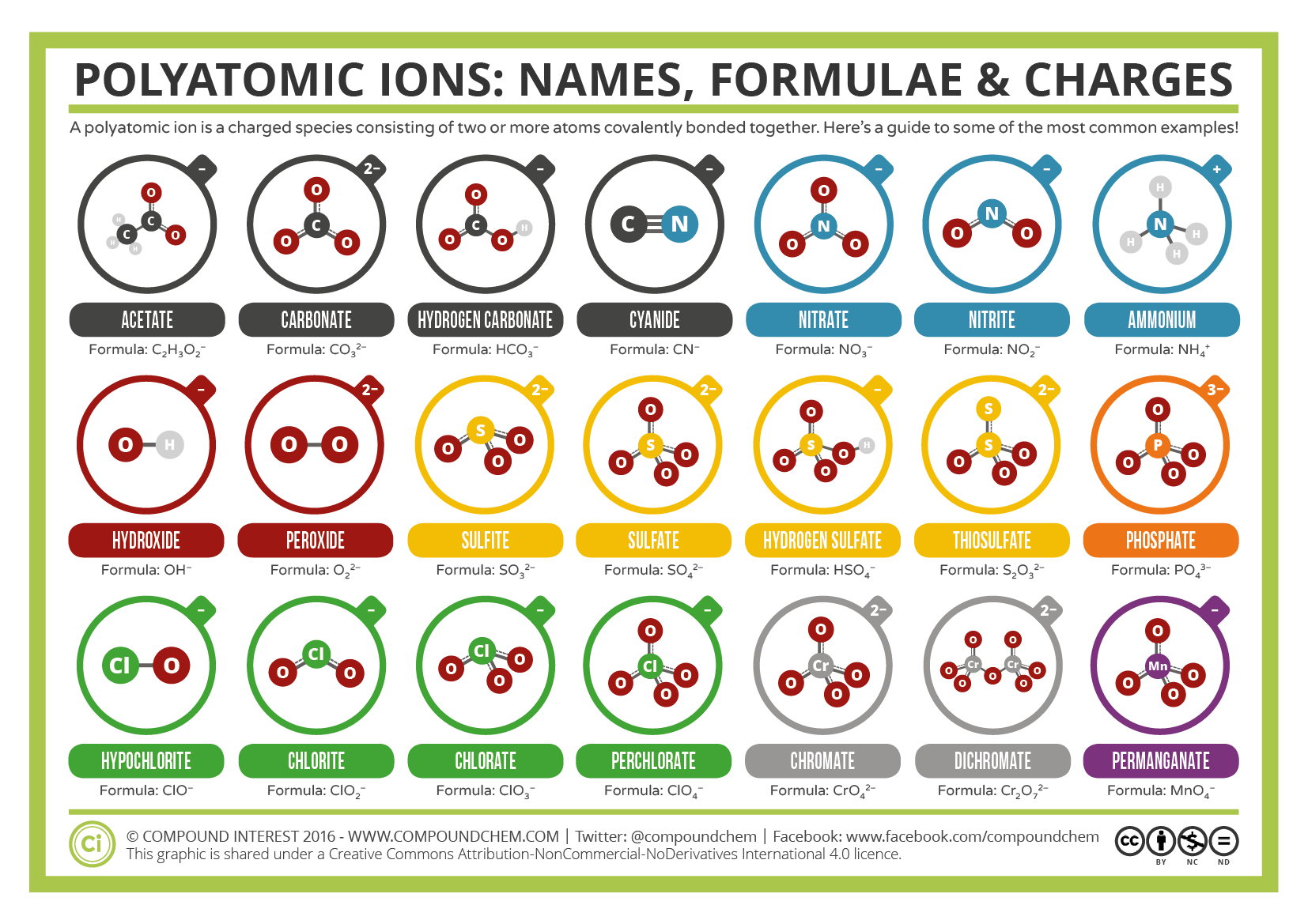3.6: Polyatomic Ions
- Page ID
- 86602
Learning Objectives
- To identify and name polyatomic ions.
Some ions consist of groups of atoms covalently bonded together and have an overall electric charge. Because these ions contain more than one atom, they are called polyatomic ions. The structures, names, and formulas of some polyatomic ions are found in the below figure and table.

Polyatomic ions have defined formulas, names, and charges that cannot be modified in any way. Table \(\PageIndex{1}\) lists the ion names and ion formulas of the most common polyatomic ions. For example, \(\ce{NO_3^{−}}\) is the nitrate ion; it has one nitrogen atom and three oxygen atoms and an overall −1 charge.
| Ion Name | Ion Formula |
|---|---|
| hyddronium ion | H3O+ |
| ammonium ion | NH4+ |
| hydroxide ion | OH− |
| cyanide ion | CN− |
| carbonate ion | CO32− |
| bicarbonate or hydrogen carbonate | HCO3− |
| acetate ion | C2H3O2− or CH3CO2− |
| nitrate ion | NO3− |
| nitrite ion | NO2− |
| sulfate ion | SO42− |
| sulfite ion | SO32− |
| phosphate ion | PO43− |
| phosphite ion | PO33− |
Note that only two polyatomic ions in this table are cations, hydronium ion (H3O+) and ammonium ion (NH4+), the remaining polyatomic ions are all negatively-charged and, therefore, are classified as anions. However, only two of these, the hydroxide ion and the cyanide ion, are named using the "-ide" suffix that is typically indicative of negatively-charged ions. The remaining polyatomic anions, which all contain oxygen, in combination with another non-metal, exist as part of a series in which the number of oxygens within the polyatomic unit can vary. A single suffix, "-ide," is insufficient for distinguishing the names of the anions in a related polyatomic series. Therefore, "-ate" and "-ite" suffixes are employed, in order to denote that the corresponding polyatomic ions are part of a series. Additionally, these suffixes also indicate the relative number of oxygens that are contained within the polyatomic ions. Note that all of the polyatomic ions whose names end in "-ate" contain one more oxygen than those polyatomic anions whose names end in "-ite." Unfortunately, much like the common system for naming transition metals, these suffixes only indicate the relative number of oxygens that are contained within the polyatomic ions. For example, both the nitrate ion, symbolized as NO3−, and the sulfate ion, symbolized as SO42−, share an "-ate" suffix, however, the former contains three oxygens, and the latter contains four. Additionally, both the nitrate ion and the sulfite ion contain three oxygens, but these polyatomic ions do not share a common suffix. Unfortunately, the relative nature of these suffixes mandates that the ion formula/ion name combinations of the polyatomic ions must simply be memorized.

